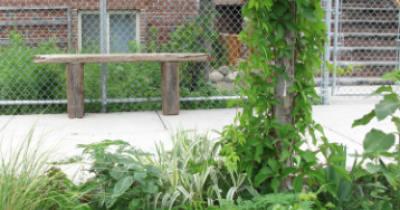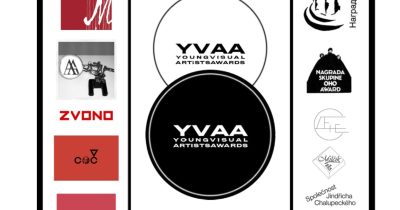Opening April 8-18:30-21h
April 8-june 30 2017
La Giarina Arte Contemporanea
Via Interrato dell’acqua morta, 82
Verona, VR 37129
Italy
Ru alum Andrea Bianconi will be featuring her work alongside Rhonda Zwillinger and Arch Connelly for Luxury, curated by Luigi Meneghelli at La Giarina Arte Contemporanea.
COMUNICATO STAMPA
“Guardo fuori dal mio studio e vedo tutti i tabelloni luminosi, vedo la porta di un ‘Sexy Shop’ fatta a forma di serratura enorme: questa è New York, questa è la nostra storia dell’arte”. Così in un’intervista Arch Connelly (Chicago, 1950; New York, 1993). Erano i frenetici anni ‘80 dell’ East Village, gli anni in cui l’artista si lasciava trapassare dagli eventi e dalle cose e insieme si prolungava e coesisteva con essi. “Essere ovunque nel mondo e avere il mondo dentro di sé”, era un altro degli slogan del tempo. Nessun divieto, nessuna tecnica privilegiata, ma solo un flusso caotico di immagini che si inseguono, di oggetti che diventano una vera espansione epidermica del soggetto, un prolungamento sensoriale del suo corpo nel mondo.
Così gli specchi, i tondi, le cornici di Connelly appaiono come inondati da una marea di elementi superflui e gratuiti come strass, perle finte, ricami, residui materici argentati, che trasformano e stravolgono ogni idea di funzione e uso. A contare sembra che sia l’iperdecorazione, l’espressione dell’artificio: una sorta di visione infantile e giocosa della realtà.
Anche il lavoro di Rhonda Zwillinger (New York, 1950) si fonda sull’eccesso di un ornamento che dilaga, fino a riempire tutto, a sommergere ogni oggetto come una schiuma avvolgente e abbagliante. Ma mentre Connelly rimane legato alla bidimensionalità della parete, il bizzarro mondo della Zwillinger (attualmente in mostra al Museum Boijmans di Rotterdam) si appropria dello spazio, lo trascina nel suo sogno eccentrico e romantico. È un’opera composta da borsette e scarpe, da pareti decorate con motivi floreali, da tavolinetti con piedestallo a tortiglione, da quadri con una pittura psichedelica che spesso replica motivi della Storia delle Immagini. Le perline di vetro, le paillettes, le palline di plastica che ricoprono ogni elemento compiono un’operazione anticlassica, con l’intento di degradare i valori “alti” dell’Arte in favore della banalità di massa.
Ma di quest’arte che sta tra denuncia e kitsch, tra critica e irrisione, cosa è rimasto dopo trent’anni? Rivederla è ripercorrere utopie sveltamente seppellite o scoprire quanto di quest’ultima festa visiva rimane ancora di inespresso?
Non è un caso che un artista come Andrea Bianconi (Vicenza, 1974) abbia ripreso in mano valigie ricolme di lustrini e di piccoli oggetti d’antan o maschere ricoperte di borchie, perle e spaghi. Egli ama cambiare continuamente la struttura dell’opera, disfarla tra le mani, moltiplicarla, dilatarla fino a farla diventare inafferrabile. Allora l’opulenza, il lusso (il “Luxury” del titolo), può trasformarsi in passione conoscitiva, in raccolta di frammenti, in romantica collezione delle cose della vita. Può diventare un modo per abbigliare il mondo, utilizzando proprio gli oggetti che il mondo stesso ha perduto o dimenticato.
“I look out of my studio and see illuminated billboards, I see the door of a sex shop in the form of a huge zip: this is New York, this is our art history.” Arch Connelly (Chicago 1950 – New York 1993) said this in an interview during the East Village’s frenetic 1980s, the years in which the artist was skewered by events and things and yet, at the same time, continued to coexist with them. “To be everywhere in the world and to have the world within yourself” was another slogan of the times. Connelly would not accept vetoes; he had no favourite technique but, instead, chased after a chaotic flood of images: objects that expanded the object of his interest over the surface or skin of his works, a sensorial extension of his actual body into the world.
And so Connelly’s mirrors, tondos, and frames seem to be flooded by a tide of such superfluous and gratuitous elements as rhinestones, fake pearls, embroidery, and fragments of silvered fabric that transform and overturn any idea of function and use. What always counts seems to be hyper-decoration, the expression of artifice: a kind of childlike and playful vision of reality.
The work by Rhonda Zwillinger (New York 1950) is also based on an excess of ornamentation that floods, to the point of filling everything, and submerges each object in an enveloping and blinding foam. But while Connelly remained attached to the two-dimensionality of the walls, Zwillinger’s bizarre world (currently on show at the Museum Boijmans, Rotterdam) appropriates space and draws it into her eccentric and romantic dream world. Her work consists of bags and shoes, of walls decorated with floral motifs, of small tables on twisted pedestals, of pictures with a psychedelic painting that often reutilises motifs from the history of images. The glass beads and plastic pearls that cover every element engage in an anti-classical action, one with the aim of undermining the “high” values of art in favour of the banality of mass culture.
But now, after thirty years, what has remained of this art, one at a halfway point between condemnation and kitsch, criticism and derision? When we look back at it, are we following the traces of utopias that were speedily buried or are we discovering just how much of this last visual celebration still remains to be expressed?
It is not by chance that such an artist as Andrea Bianconi (Vicenza 1974) has exploited suitcases full of sequins and tiny objects d’antan, or masks covered with studs, pearls, and strings. He loves to continually change the structure of his work, to dismantle it with his hands, to multiply and dilate it to the point of making it elusive, something that cannot be pinned down. At this point opulence, luxury (the “Luxury” of the title), can be transformed into cognitive passion, into a collection of fragments, into a romantic compilation of the things of life. It can become a way to clothe the world – but by using the very objects that the world itself has lost or forgotten.




